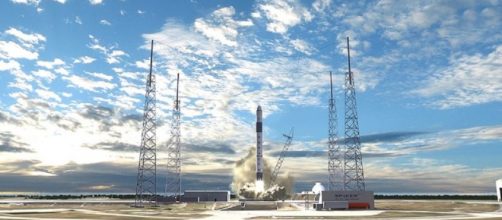About a year and a half ago, with then Texas Governor Rick Perry and SpaceX CEO Elon Musk in attendance, ground was broken on the first private spaceport designed to launch rockets vertically near Brownsville, Texas. At the time, SpaceX announced that it expected to launch a rocket a month, either a Falcon 9 or a Falcon Heavy in the skies over South Texas starting in 2016. But then, the Texas spaceport story fell off the face of the Earth, as it were. Fortunately, the Valley Morning Star has an explanation as to why things are taking so long.
It seems that the land where the spaceport is being built is too soft and unstable to bear the stress of rocket launches.
SpaceX has arrived at a solution called “soil surcharging.” The process involves trucking in dirt and piling it up at the spaceport site. Eventually, 330,000 cubic yards of soil, enough to cover a football field 13 stories high, will be brought in and graded across the site. The new soil will be allowed to settle into the ground. Once the process is complete, the building of the launch pad and associated buildings will begin in earnest. The first launch is scheduled to take place sometime in 2018.
When SpaceX announced that it wanted to build a private spaceport, a stiff competition developed among several states for the honor of hosting it. The two front runners, mainly because of geography, were Texas and Florida.
Both states are located in the southern United States and near a body of water.
Texas won out in the end for two reasons. First, state and local officials were lavish in offering tax and other incentives to bring home the spaceport. Second, the Texas site would afford SpaceX control of the launch range. A spaceport in Florida would have to share the launch range with NASA, the Air Force, and a variety of other commercial companies. SpaceX already launches rockets from Florida and has use of one of the massive launch complexes that used to launch the space shuttle and, before that, the Saturn V rocket that took Apollo to the moon.
SpaceX has recently made history by landing the first stage of its Falcon 9, first on land, then, after several attempts, on a drone ship in the Atlantic. The ability to land and reuse rockets is vital to the goal of lowering the cost of space travel which in turn will open up the high frontier to a vast amount of commercial activity.

